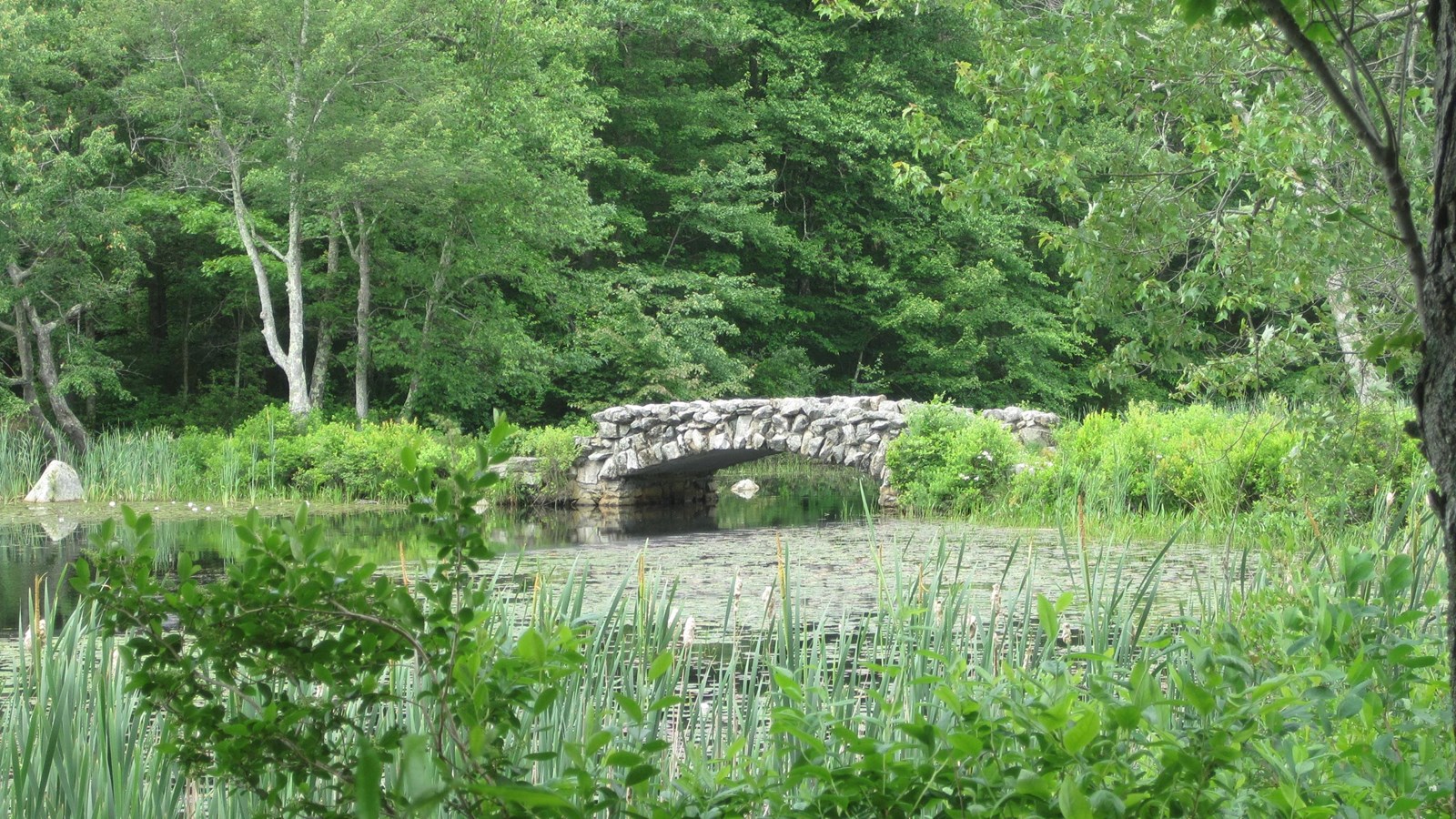Last updated: November 6, 2024
Place
The Parklands

Beach/Water Access, Benches/Seating, Canoe/Kayak/Small Boat Launch, Historical/Interpretive Information/Exhibits, Parking - Auto, Picnic Table, Playground, Scenic View/Photo Spot, Trailhead
Life in industrial communities was tough. The natural world and its wonders remained difficult for mill workers to grasp. The Draper family, the owners of the Hopedale Manufacturing Company, sought a place of recreation for their workers. After years of trying to squeeze every bit of productivity out of their limited water rights, the company had created a massive reservoir used to power their mills. To prevent development around the banks of their mill pond and to give their workers a place of recreation, the company undertook an ambitious park development project around their mill pond. The Draper’s hired noted landscape architect Warren Henry Manning to design their new park. Over the next decade, Hopedale spent $2,500 a year on developing approximately 1,000 acres of land into a public park. More than 4 miles of winding forest trails were created. Picnic areas, tennis courts, a bathhouse and a boat house were built. Sand was brought in and an artificial beach was created on the shores of the mill pond.
An annual field day event, hosted by the company was held on the new park grounds once a year. The company even developed a small peninsular along the lake with mill houses. The “Lake-Point Development” as it came to be known held 10 two-family houses that offered mill workers water-front property. This small community, adjacent to the parklands and mill pond became a model of suburban planning. A reimagining of the mill pond and its surrounding which benefitted the workers as well as the employers, and still serves as an important reminder to us of the need to get outside and experience nature. Feel free to roam the parklands and experience them as the industrial workers here would have.
